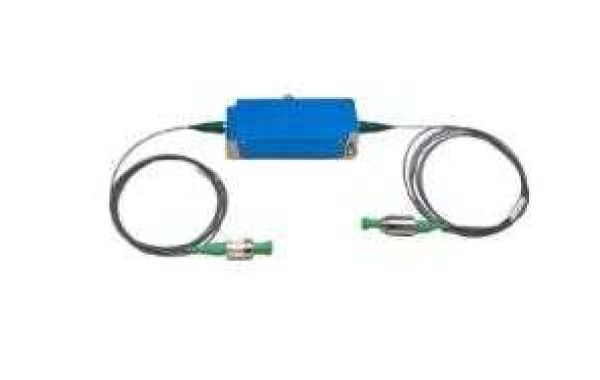Fiber Acousto-Optic Modulators (AOMs) have become essential components in contemporary optical systems, providing dynamic control over laser outputs. By utilizing the acousto-optic effect, fiber AOMs modulate light properties, thereby enhancing the functionality and adaptability of optical technologies.
Functionality and Design
A fiber AOM operates by introducing an acoustic wave into an optical fiber, creating a periodic modulation of the refractive index. This modulation diffracts the incoming light, altering its intensity and frequency. The design of fiber-coupled AOMs often incorporates acousto-optic grade crystals, stable optical collimators, and precise mechanical structures to ensure low insertion loss and high power handling.
Performance Metrics
Key performance indicators for fiber AOMs include:
- Insertion Loss: Low insertion loss, typically around 1.2 dB, ensures minimal signal degradation.
- Extinction Ratio: High extinction ratios, often ≥45 dB, provide effective modulation depth.
- Optical Diffraction Efficiency: High efficiency, up to 80%, indicates effective light modulation.
- VSWR (Voltage Standing Wave Ratio): Values around 1.2:1 reflect high RF efficiency, crucial for minimizing power losses.
Applications in Optical Systems
Fiber AOMs are instrumental in various optical applications:
- Pulse Picking: Selecting specific pulses from a laser pulse train for amplification, essential in applications like material processing and medical treatments.
- Frequency Shifting: Applying side-bands for heterodyne sensing, enhancing the detection capabilities in communication systems.
- Laser Intensity Modulation: Controlling the power output of lasers in real-time, vital for applications requiring precise light intensity management.
Innovations and Customization
Manufacturers are advancing fiber AOM technology by offering custom designs tailored to specific system requirements. These innovations include optimizing the modulator's dimensions, improving thermal stability, and enhancing compatibility with various fiber types. Such customizations ensure that fiber AOMs can be seamlessly integrated into diverse optical setups, meeting the unique demands of each application.
In summary, fiber acousto-optic modulators play a critical role in modern optical systems, providing precise and efficient control over laser parameters. Their ongoing development and customization continue to drive advancements in optical technologies, enabling more sophisticated and versatile applications.







